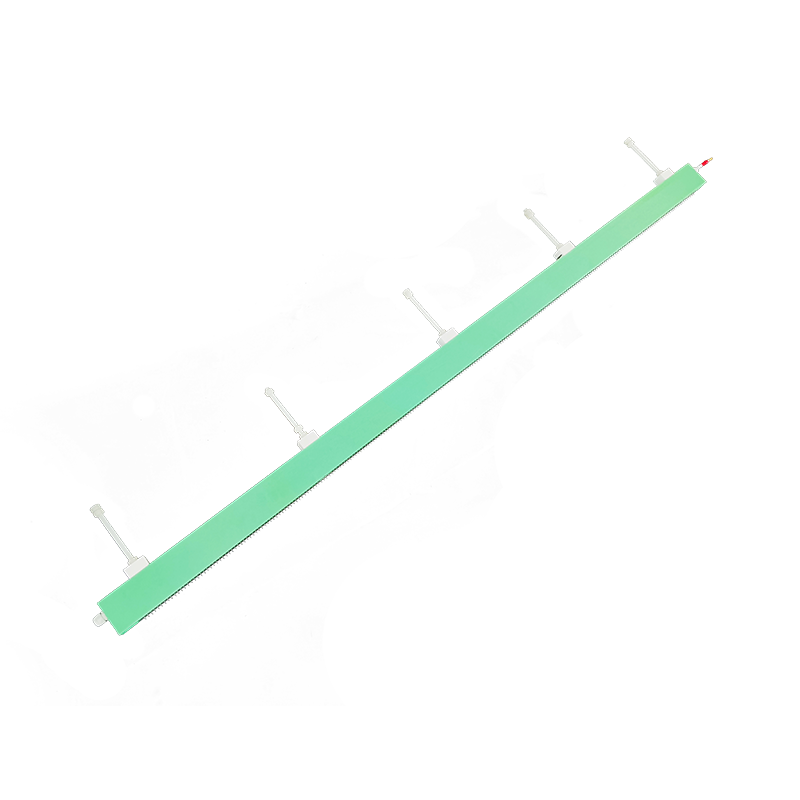Innovation and Applications of Gradient Boosting Technology in Ion Implantation High-Voltage Power Supplies
1. Technical Principle and Core Mechanism
Gradient boosting technology in ion implantation high-voltage power supplies dynamically adjusts acceleration voltage (ranging from kV to MeV) to achieve longitudinal gradient distributions of ion concentrations within materials. Traditional fixed-energy implantation often leads to uneven impurity distribution, whereas gradient boosting enables precise matching of doping concentrations at different depths through staged energy switching (e.g., 3–5 steps) in a single implantation cycle. For instance, in ultra-shallow junction devices, nanosecond-level voltage step responses (<10 μs) limit projection range (Rp) fluctuations to ±0.1%, preventing threshold voltage drift caused by nanometer-scale deviations.
This technology is grounded in the range theory of ions in materials (LSS theory): ion kinetic energy (E = qV) is proportional to acceleration voltage (V), while Rp nonlinearly correlates with energy. The power supply’s voltage ripple coefficient must satisfy ΔV/V ≤ 0.05% to ensure Rp stability. A multi-stage high-voltage module series design enables continuous energy adjustment, while digital PWM control guarantees dynamic precision.
2. Technical Challenges and Breakthroughs
Precision Control Challenges:
• Voltage Stability: Load regulation must exceed 0.05%. Voltage fluctuations beyond this threshold during high-dose implantation (e.g., 10¹⁷ ions/cm²) cause junction depth deviations. For example, in GaN devices, Mg⁺ implantation suffers from reduced activation rates if voltage instability exacerbates diffusion gradients during annealing.
• Thermal Management: Annealing wide-bandgap materials (e.g., SiC, GaN) requires temperatures >1300°C. Joule heat generated during prolonged boosting may induce local lattice damage. Solutions include liquid cooling and pulsed boosting to minimize thermal accumulation.
Material Adaptability Innovations:
• To address p-type doping challenges in SiC/GaN (e.g., Mg ionization energy up to 160 meV), gradient boosting combined with co-implantation (e.g., N⁺/Mg⁺) suppresses vacancy clustering, increasing activation rates to >70% while reducing diffusion gradients.
• For 2D materials like graphene, ultra-low-energy implantation (<150 eV) enables substitutional doping. Gradient boosting coupled with deceleration layers (e.g., nanoscale Au films) reduces high-energy beams to eV levels, achieving nitrogen doping concentrations of 4.22 at%—surpassing the energy limits of conventional implanters.
3. Application Scenarios and Performance Enhancements
Power Semiconductor Fabrication:
• In vertical GaN Schottky barrier diodes (SBDs), fluorine ion (F⁺) gradient implantation forms high-resistance trap layers in edge termination regions. Experiments show reverse leakage current reduced by five orders of magnitude, breakdown voltage (BV) increased from 180 V to 262 V, and specific on-resistance (Rₒₙ) increased by only 9%.
• SiC MOSFETs with Al⁺ multi-energy implantation in JFET regions exhibit optimized electric field distribution, increasing BV by 40%.
Functional Coatings and Tool Modifications:
• Ti⁺/Nb⁺ gradient implantation into mold steels (e.g., H13, Cr12MoV) creates hardened layers with peak concentrations of 44% at 102 nm depth. Microhardness improves by 200%, friction coefficients decrease by 30%, and corrosion resistance enhances due to shielding effects from Fe₂O₃/titanium nitride composite layers.
• For polymer surface treatment (e.g., Kapton films), low-energy He⁺ gradient implantation introduces -NHCOR groups, altering material polarity and increasing triboelectric nanogenerator (TENG) output power by 120%.
4. Future Development Trends
1. Intelligent Control: Machine learning algorithms will optimize voltage gradient curves in real time, dynamically matching material defect recovery kinetics to reduce annealing dependencies.
2. Ultra-Low-Energy Implantation: Cold-cathode ion sources and electrostatic lens systems will push energy limits to ~10 eV, addressing low doping efficiency in 2D materials.
3. Multi-Ion Beam Synergy: Sequential gradient implantation of different ions (e.g., B⁺/P⁺) will enable p-n superlattice structures in single devices, breaking traditional doping concentration limits.
Conclusion: Gradient boosting technology redefines the precision boundaries of ion implantation—from nanoscale junction depth control to multidimensional concentration design. Its core lies in the synergy between dynamic power supply response and materials science. As wide-bandgap semiconductors and low-dimensional materials advance, this technology will underpin high-reliability device manufacturing.




















